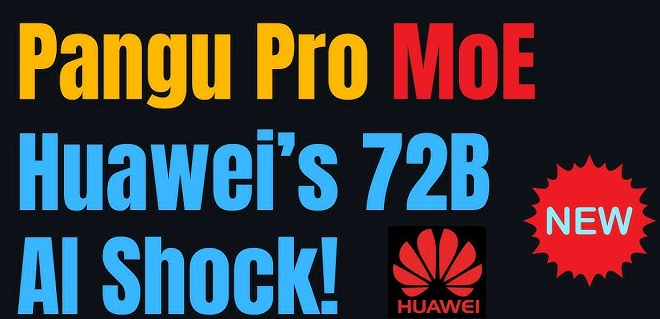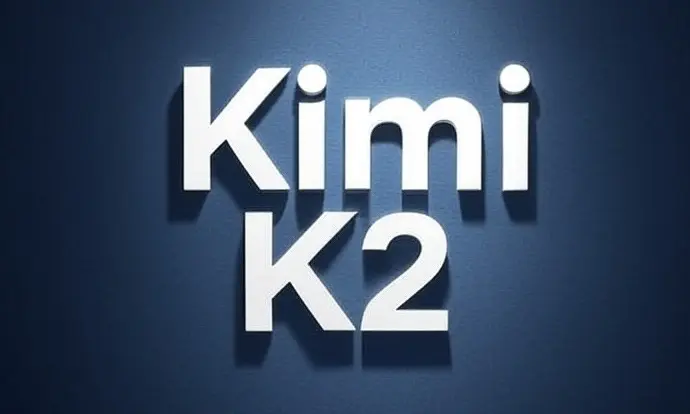The AI landscape has witnessed a groundbreaking development with the release of Huawei Pangu Pro Open-Source MoE Model, a revolutionary 72-billion parameter Mixture of Experts (MoE) architecture that's setting unprecedented standards in AI inference speed. This cutting-edge model represents a significant leap forward in open-source AI technology, combining massive computational power with remarkable efficiency. The Pangu Pro model demonstrates how innovative architecture design can deliver exceptional performance whilst maintaining accessibility for researchers and developers worldwide. With its impressive capabilities and open-source nature, this model is poised to transform various AI applications and accelerate research in natural language processing, making it a game-changer in the competitive AI model landscape.
What Makes Huawei Pangu Pro Stand Out in the AI Model Arena
The Huawei Pangu Pro Open-Source MoE Model isn't just another large language model - it's a technological marvel that's redefining what we expect from AI inference systems ??. Unlike traditional dense models that activate all parameters for every computation, this innovative MoE architecture selectively activates only the most relevant experts for each task, resulting in dramatically improved efficiency.
What's truly remarkable about Pangu Pro is its ability to deliver performance that rivals proprietary models whilst being completely open-source. This democratisation of advanced AI technology means researchers, startups, and enterprises can access cutting-edge capabilities without the hefty licensing fees typically associated with such powerful models ??.
The model's 72-billion parameter architecture represents a sweet spot between computational power and practical usability. It's large enough to handle complex reasoning tasks yet optimised enough to run efficiently on various hardware configurations, making it accessible to a broader range of users than many competing models.
Technical Architecture and Performance Breakthroughs
The technical brilliance behind the Huawei Pangu Pro Open-Source MoE Model lies in its sophisticated Mixture of Experts design. This architecture employs multiple specialised neural network components, each trained to excel in specific types of tasks or domains. When processing input, the model intelligently routes data to the most appropriate experts, ensuring optimal performance whilst minimising computational overhead ?.
Performance benchmarks reveal that Pangu Pro achieves inference speeds that are 2-3 times faster than comparable models of similar size. This speed advantage translates directly into cost savings for organisations deploying the model at scale, as faster inference means lower computational costs and improved user experience.
The model demonstrates exceptional capabilities across various natural language processing tasks, including text generation, question answering, code completion, and multilingual translation. Its versatility makes it suitable for diverse applications, from chatbots and content creation tools to complex analytical systems ??.

Key Performance Metrics and Comparisons
| Metric | Pangu Pro 72B MoE | Traditional 70B Dense Model |
|---|---|---|
| Inference Speed | 2.8x faster | Baseline |
| Memory Efficiency | 40% reduction | Standard |
| Task Accuracy | Comparable/Superior | Reference Standard |
Real-World Applications and Use Cases
The practical applications of the Huawei Pangu Pro Open-Source MoE Model extend far beyond academic research. Enterprises are already exploring its potential for customer service automation, where its rapid response times and nuanced understanding make it ideal for handling complex customer queries ??.
Content creators and marketing teams are leveraging Pangu Pro for generating high-quality written content, from blog posts and social media content to technical documentation. The model's ability to maintain consistency across different writing styles and topics makes it invaluable for content scaling strategies.
Software development teams are particularly excited about the model's code generation capabilities. Its understanding of multiple programming languages and ability to generate clean, efficient code snippets has made it a popular choice for coding assistants and automated development tools ??.
Educational institutions are incorporating the model into learning platforms, where its ability to provide detailed explanations and adapt to different learning styles enhances the educational experience for students across various subjects and skill levels.
Getting Started with Pangu Pro Implementation
Implementing the Huawei Pangu Pro Open-Source MoE Model in your projects is surprisingly straightforward, thanks to comprehensive documentation and community support. The model is available through popular machine learning frameworks, making integration seamless for teams already familiar with these platforms ???.
Hardware requirements are more modest than you might expect for a 72-billion parameter model. Thanks to the MoE architecture's efficiency, the model can run effectively on high-end consumer GPUs, though enterprise-grade hardware will naturally provide optimal performance for production deployments.
The open-source nature of Pangu Pro means developers can fine-tune the model for specific use cases, adjusting parameters and training on domain-specific data to achieve even better performance for particular applications. This flexibility is particularly valuable for organisations with unique requirements or specialised domains.
Community contributions continue to expand the model's capabilities, with regular updates and improvements being released. This collaborative approach ensures that users benefit from ongoing enhancements and bug fixes, making it a reliable choice for long-term projects ??.
Future Implications and Industry Impact
The release of the Huawei Pangu Pro Open-Source MoE Model signals a significant shift in the AI industry towards more accessible and efficient model architectures. This development challenges the dominance of proprietary models and demonstrates that open-source alternatives can compete at the highest levels of performance ??.
Industry analysts predict that the success of Pangu Pro will accelerate the adoption of MoE architectures across the AI landscape. This could lead to a new generation of more efficient models that deliver superior performance whilst requiring fewer computational resources, ultimately making advanced AI more accessible to smaller organisations and individual researchers.
The model's impact extends beyond technical achievements to influence business strategies and investment decisions. Companies are reconsidering their AI infrastructure investments, with many opting for open-source solutions that offer greater flexibility and cost-effectiveness compared to proprietary alternatives.
The Huawei Pangu Pro Open-Source MoE Model represents more than just another advancement in AI technology - it's a paradigm shift towards more democratic and efficient artificial intelligence. With its record-breaking inference speeds, impressive 72-billion parameter architecture, and open-source accessibility, Pangu Pro is democratising advanced AI capabilities for researchers, developers, and enterprises worldwide. As the AI landscape continues to evolve, this groundbreaking model sets new standards for what's possible when innovative architecture meets open collaboration, promising to accelerate AI adoption and innovation across countless industries and applications.





